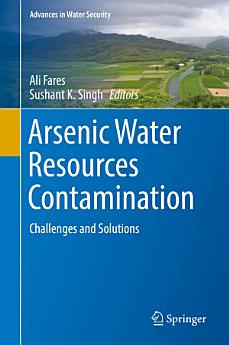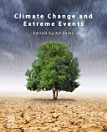Arsenic Water Resources Contamination: Challenges and Solutions
Ali Fares · Sushant K. Singh
Jul 2019 · Springer
Ebook
305
Pages
reportRatings and reviews aren’t verified Learn More
About this ebook
This edited volume brings together a diverse group of environmental science, sustainability and health researchers to address the challenges posed by global mass poisoning caused by arsenic water contamination. The book sheds light on this global environmental issue, and proposes solutions to aquatic contamination through a multi-disciplinary lens and case studies from Bangladesh and India. The book may serve as a reference to environment and sustainability researchers, students and policy makers.
Part one of the book describes the issue of arsenic contamination in ground water and river basins, including its source and distribution in specific locations in India. Part two explains the routes of exposure to environmental arsenic, its transport in aquatic ecosystems, and the health risks linked to arsenic exposure in food and the environment. Part three addresses sustainable arsenic contamination mitigation strategies and policies, the socioeconomic, demographic, cultural and psychological aspects of arsenic contamination, and the potential applications of GIS and remote sensing in providing solutions. Part four concludes by discussing the role of local and regional institutions in water resources management for a variety of issues including but not limited to arsenic contamination, and presents a case study in the Indus river basin in Pakistan to propose future contamination mitigation strategies.
Part one of the book describes the issue of arsenic contamination in ground water and river basins, including its source and distribution in specific locations in India. Part two explains the routes of exposure to environmental arsenic, its transport in aquatic ecosystems, and the health risks linked to arsenic exposure in food and the environment. Part three addresses sustainable arsenic contamination mitigation strategies and policies, the socioeconomic, demographic, cultural and psychological aspects of arsenic contamination, and the potential applications of GIS and remote sensing in providing solutions. Part four concludes by discussing the role of local and regional institutions in water resources management for a variety of issues including but not limited to arsenic contamination, and presents a case study in the Indus river basin in Pakistan to propose future contamination mitigation strategies.
About the author
Ali Fares is the Interim Vice President of Research, Innovation, and Sponsored Programs and Professor of Water Security at Prairie View A&M University, Texas. He is currently the editor of the Water Security Book Series and edited two books. In addition, he published 14 book chapters, over 20 conference proceedings, and over 74 articles in peer reviewed journals. His research interests include disaster preparedness and resiliency, flood prediction and mitigation, water security, water-energy-food nexus, watershed hydrology and management, water allocation, irrigation management, and adaptation and mitigation of climate variability.
Dr. Sushant Singh is the lead artificial intelligence and machine learning scientist in the Department of Health, Insurance and Life Sciences at Virtusa Corporation, New York. He earned two PhD degrees: one in Environmental Science from India and another in Environmental Management in the US. He authored more than 30 peer reviewed journal articles, two books, three book chapters, two conference proceedings, one encyclopedia entry, and over 25 international presentations. His research interests include the application of artificial intelligence in health, insurance, life sciences, and environmental sustainability.Rate this ebook
Tell us what you think.
Reading information
Smartphones and tablets
Install the Google Play Books app for Android and iPad/iPhone. It syncs automatically with your account and allows you to read online or offline wherever you are.
Laptops and computers
You can listen to audiobooks purchased on Google Play using your computer's web browser.
eReaders and other devices
To read on e-ink devices like Kobo eReaders, you'll need to download a file and transfer it to your device. Follow the detailed Help Center instructions to transfer the files to supported eReaders.





